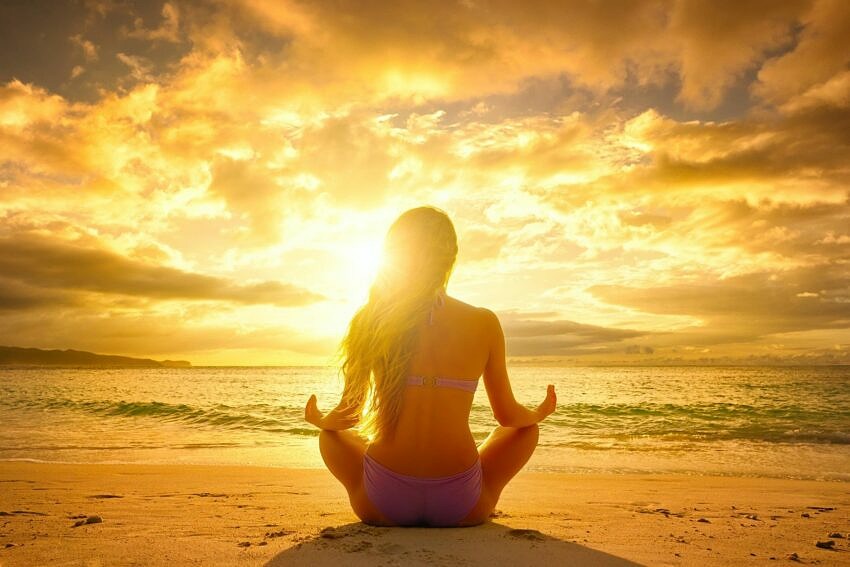As an athlete, having a consistent routine is just as important as the exercise that makes up the routine. Whether it’s putting the milage in the saddle of a mountain bike or putting in the time at the gym, making it a consistent routine is just as important to reap results. Amid all the workout routines I do to compete in mountain bike races or spend days backcountry skiing, there’s one important routine that goes by the wayside and that’s remembering to stretch. Let’s face it, getting older sucks, and stretching is one of those things (for whatever reason) we forget to do as we get older, but it’s probably the one thing we need the most as we get older. One thing that I have found helpful is to add hot yoga sessions as part of my weekly routine. Making one hour hot yoga sessions as part of my weekly fitness routine ensures I’m not only getting my stretching in, but it also makes me more aware that I should stretch before gym workouts or long bike rides.
Hot yoga has many health claims, but there has been very little randomized controlled trials that prove or disprove many of the claims made, and being the nerd I am I did a bit of research and found that there may be some validity to some health claims made, but science still has some catching up to do. With the tiny amount of real scientific studies done on hot yoga, there still seems to be more reasons to do it than not, and here are some reasons.
Increased Upper and Lower Body Range of Motion
This falls under the heading of “no kidding, really?”. Besides the fact that you’re doing yoga and getting stretched out, the environment, on average, is 92 to 98 degrees Fahrenheit with 40% humidity. The heat improves blood flow to the muscles, making them more flexible as you work through the yoga poses.
Improved Balance
This is another claim that falls under the heading of “no kidding”, however, balance is one marker that can be a determining factor to overall longevity, because balance is one of those things that can help you avoid one of those falls that end up breaking a hip. Just ponder on that for a moment.
Many of the poses are performed by standing on one leg anywhere between 10 to 60 seconds, so if done consistently over time, there will be improved balance. Holding a pose on one leg in a certain position engages the tiny muscles on your foot which will get stronger the more you engage them.
Improved Isometric Deadlift Strength
Ok, I’ll admit that this one’s not that obvious as balance and range of motion, but there may be some truth to this. In a 2015 study conducted by the National Center for Biotechnology Information (which is one of the very few studies conducted that used randomized controlled trial techniques), the study revealed that voluntary contractions measured using a load cell device at the knee joint was 10% better in the studied yoga group compared to the control group. In my experience, since I’ve started my yoga routine, more muscles engage when I do deadlifts or squats, and I feel this may be connected to the improved balance and range of motion.
Improvement in Certain Cardiovascular Risk Markers
In the same 2015 study conducted by the National Center for Biotechnology Information revealed significant improvement in carotid artery compliance as well a significant decrease in artery stiffness compared to baseline; arterial stiffness being an independent risk factor in cardiovascular disease. Other health claims such as those related to blood glucose regulation, improved cholesterol and triglycerides, and improved body composition requires more in-depth study, however, in the 2015 NCBI study, there was one surprising anomaly identified. The study revealed that among young adults, there was a decrease in HDL cholesterol (i.e. good cholesterol). This was surprising considering that exercise has been shown to improve HDL levels. According to the 2015 NCBI study, the only CVD health claim that may have some validity is related to arterial compliance and stiffness, but in terms total blood lipids, the jury is still out.
Mindfulness
I think this health claim, by far, is the one that without a doubt has the most validity. In fact, it is the whole purpose of yoga. It is the process of brining mind and body together as one, focusing solely on the present and bringing one’s sense of being to the here and now through the practice of meditation. Each movement and pose connects you with your body while constantly focusing on nothing else but your breathing. This has benefits that transcend any physical gain. Through the movements, the concentration on poses, and the focusing on breathing brings a sense of calm euphoria that manifests itself in the same way a pressure-release valve relieves pressure in any plumbing system resulting in a cleansing feeling.
Even though science has some catching up to do in terms of the health claims made by hot yoga, I think anecdotally, there’s enough reason to do it than not. At the end of the day, it’s all about engaging the mind and body through movement which is still going to initiate some healthy endorphin release. Physical activity is a gateway to mental health, and the practice of yoga, whether hot or not, is a good example of that, because it engages both mind and body through.

